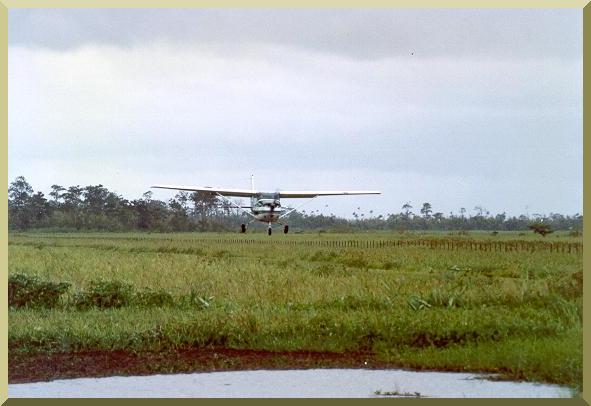|
I met my friend Newton Carvalho in 1979, while on assignment for EDIBAP, to model the flood runoff of
the Pantanal of Mato Grosso. Newton first described to me the "pororoca,"
the giant tidal wave of the Amazon and surroundings. 1
Ten years later, in 1989, I decided to go in search of the
pororoca. Following Newton's advise,
I flew to Macapa, at the mouth of the Amazon river, and looked for a guide who would take me to
sight the "pororoca." There I met Sebastião Mota Dias,
who arranged for a plane to fly out on January 22, at 6 am, toward the mouth of the Araguari river,
where the elusive natural phenomenon was expected that morning.
The plane was a vintage single-engine Cessna, and the party consisted of Mota,
an assistant, the pilot, and myself. We flew for two hours over the state of Amapa toward the
northeast, and sighted the
pororoca at 8 am, as expected, at the mouth of the Araguari.
Delighted to have accomplished my objective,
I recorded the experience on film.
On the way back, admiring the inmensity of the rainforest below us,
I wondered just how long my luck would continue.
I struck a conversation with the pilot, a time-tested, middle-aged man.
I said: "Luis, how long have you been piloting in this region?
Luis answered: "A litle less than 30 years."
I said: "This plane is pretty old. Has it ever malfunctioned?"
Luis answered casually: "Yes, many times."
Noticing my mix of surprise and preoccupation,
he reassured me: "Whenever this happens,
I just look around for a place to land."
From that moment, I felt pretty confident that my luck was not going to run out that morning.
| ||
|
|
